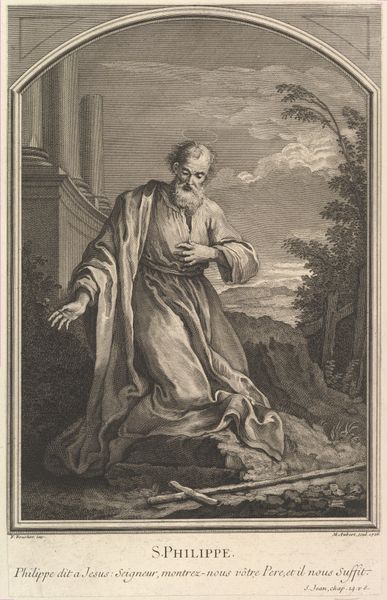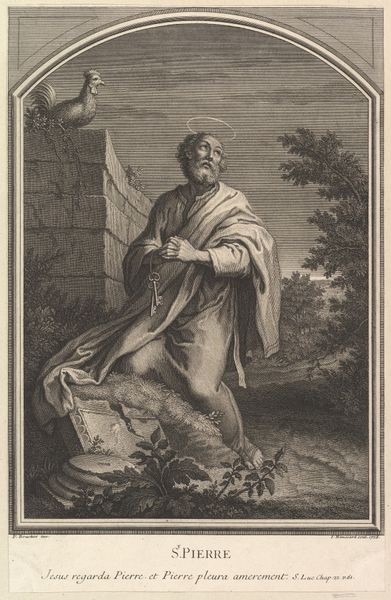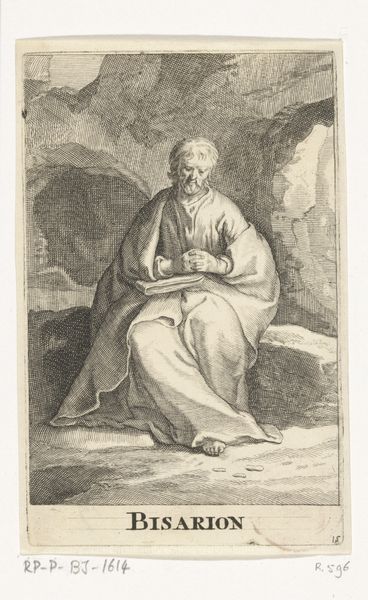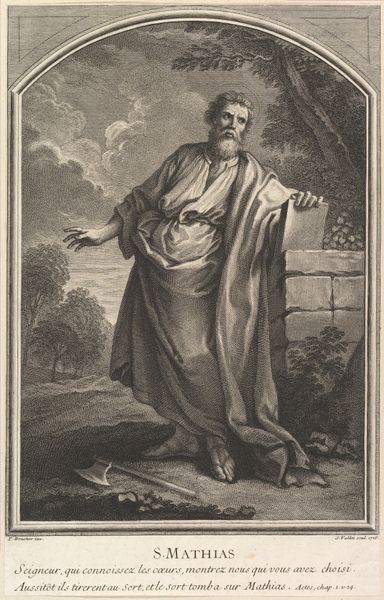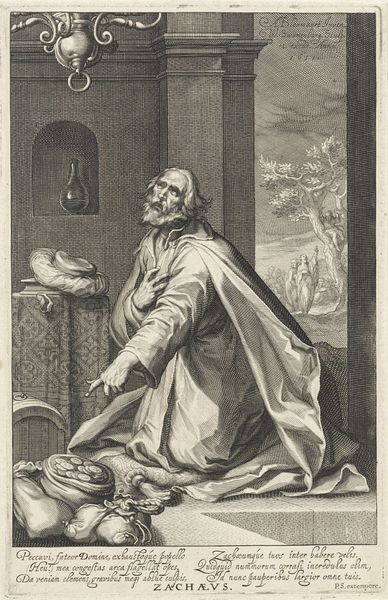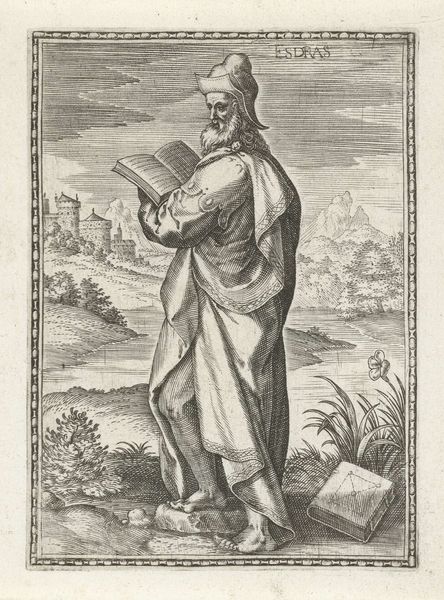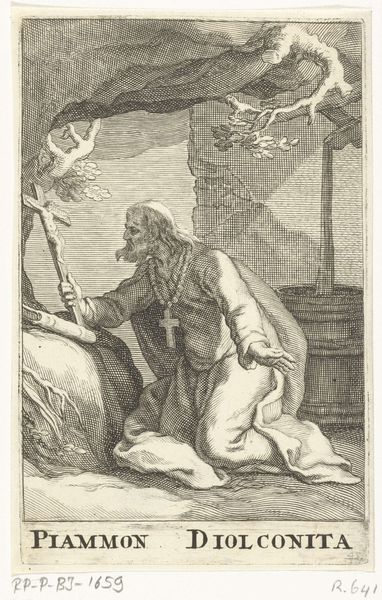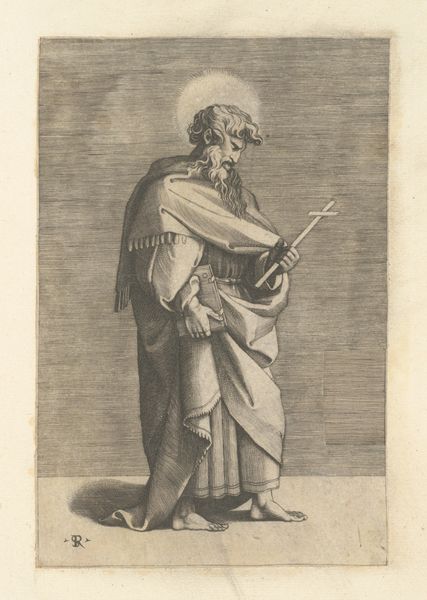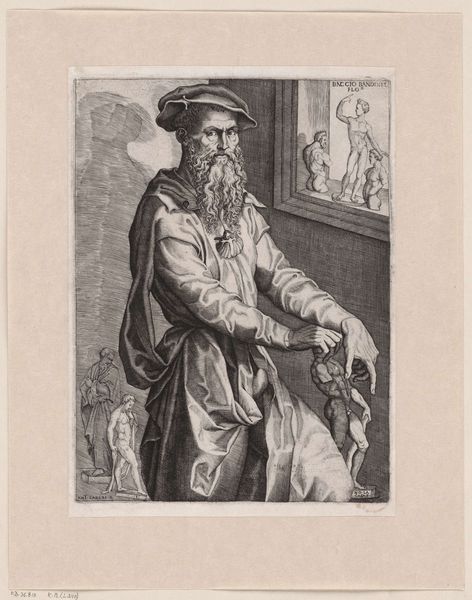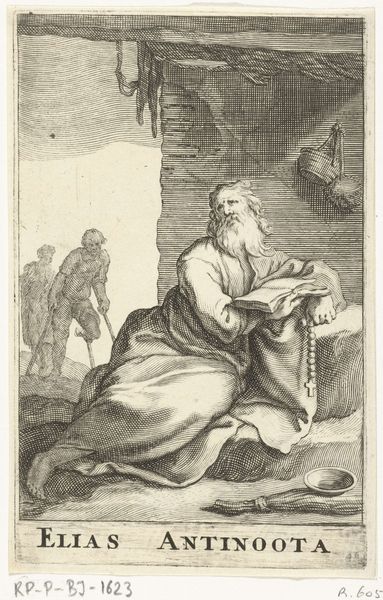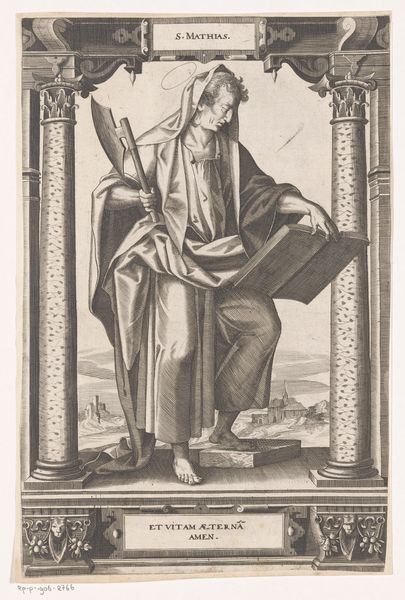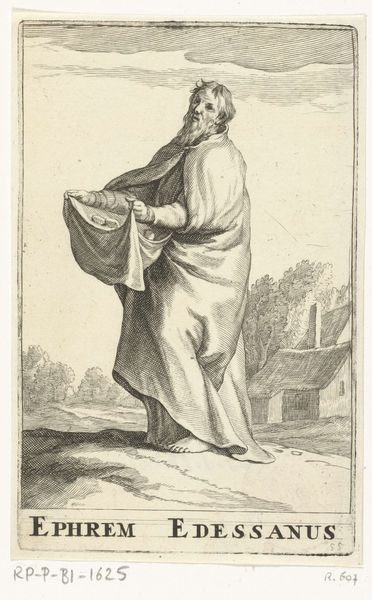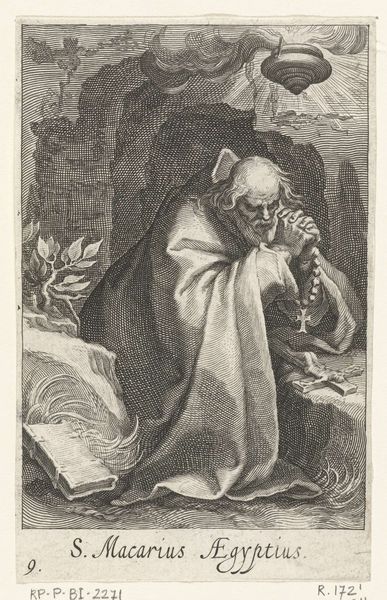
drawing, print, engraving
#
portrait
#
drawing
#
aged paper
#
baroque
# print
#
old engraving style
#
figuration
#
portrait reference
#
old-timey
#
men
#
line
#
portrait drawing
#
history-painting
#
engraving
#
columned text
Dimensions: Sheet (trimmed): 13 3/4 × 8 7/16 in. (35 × 21.5 cm)
Copyright: Public Domain
Curator: Here we have Louis Jacob's 1726 engraving, "Saint Mathew," now residing at the Metropolitan Museum of Art. Its monochrome lines depict the saint in a moment of contemplation. What strikes you immediately? Editor: The density of the engraving, the sheer amount of work it must have taken to create all those fine lines! It feels almost like fabric, the way the light plays on the folds of his garments. You can almost feel the weight and texture despite it being a two-dimensional image on, presumably, paper. Curator: The composition itself evokes Baroque sensibilities, particularly its engagement with history painting. Here we have Matthew, identifiable by the scriptural scroll beside him, poised between divine inspiration and earthly existence. Considering Matthew’s controversial background as a tax collector, there is a sense of transition in this engraving. Editor: Right. The tools of his former trade are absent; what’s present are these new tools—scroll and stylus—suggesting a different kind of labor. How does the choice of engraving as a medium speak to Jacob's intent, given its inherent reproducibility and the labour intensive aspect you touched on? Curator: Precisely! Engravings allowed for widespread dissemination of religious and historical narratives, especially during the Counter-Reformation when imagery became vital for reasserting Catholic doctrine. Furthermore, presenting Mathew as divinely inspired is not incidental—remember the crisis and schisms within Christianity throughout the 16th and 17th centuries! This image of Saint Matthew can be regarded as a sort of reassurance. Editor: It’s compelling how the artistic labor mirrors Matthew’s own transition, the engraving’s painstaking process embodying a kind of devotional work too. The material tells a parallel story to the figure depicted, wouldn't you agree? Curator: Definitely. We are invited to examine the intersection between individual spiritual transformation and the material culture of religious dissemination. In his moment of reflection, Mathew, bathed in light, becomes more than just a figurehead. He becomes an icon for the changing of one's own life through religious devotion and dedication to service. Editor: Examining it this way offers a richer understanding of how the work operates beyond just its visual representation; it highlights the tangible and intellectual effort in translating a biblical figure into a powerful image. Curator: A nuanced interplay between subject, the means of production, and the cultural landscape of its time. Thank you. Editor: A pleasure.
Comments
No comments
Be the first to comment and join the conversation on the ultimate creative platform.
